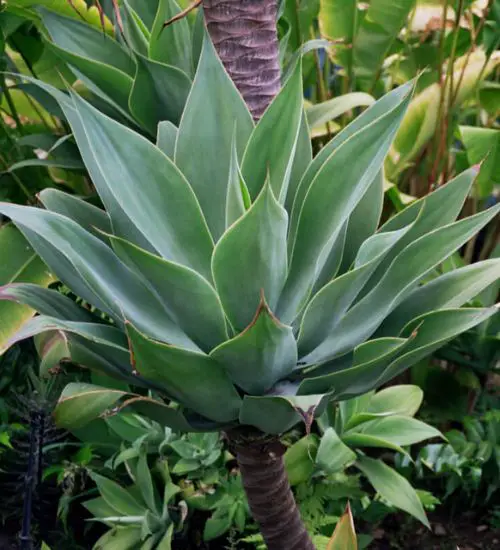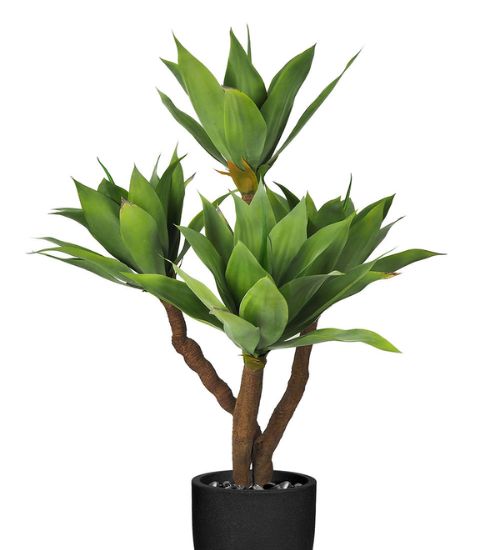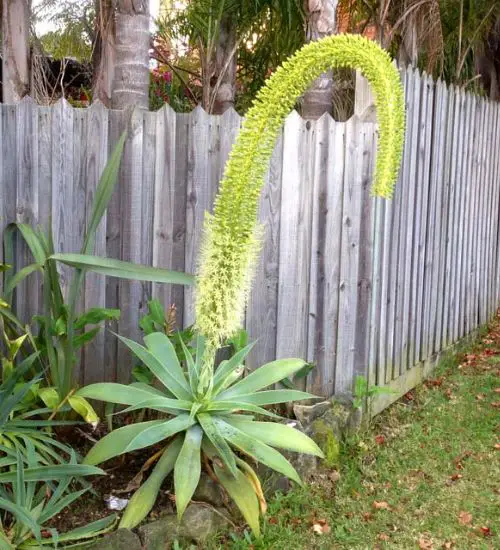Sun: full sun to partial shade
Water: Typical water needs for a succulent
Temperature: Zone 9a from 20° F to 25° F (-6.7 ° C to -3.9° C) to Zone 11b from 45° F to 50° F (7.2° C to 10° C)
Winter Survival: Winter hardy
Propagation: offsets, division
Flower: in the summer
Flower Type: Yellow-Green, white
Toxic: Generally non-toxic to humans and animals
Dormant: winter
Space Requirement: Indoors & Outdoors
Common Problems: Plants may rot if overwatered, pests
Where to buy Agave attenuata?
Basc Care for Agave attenuata
Watering
Watering for Agave attenuata is a simple task. It requires Typical water needs for a succulent.
One simple tip for you is that you can use some online apps to check the soil status before you go water your succulents. I would recommend the ThePlantsCheck app, it has some nice features there.
Fertilizing
Only feed this succulent during its active growing seasons which means no information. Use the right fertilizer applied in the right amounts. Applying half-strength balanced fertilizer every month or so is recommended for optimal results.
Do not fertilize during winter as the plant is dormant.
Sun & Location Requirements for "Fox Tail Agave, Swan’s Neck Agave, Lion’s Tail Agave, Dragon Tree Agave, Century Plant"
Agave attenuata requires full sun to partial shade. It's best to keep it in an area of your garden or home that gets plenty of bright, indirect sunlight throughout the day. When temperatures are too hot and direct sunlight is too intense, try moving "Fox Tail Agave, Swan’s Neck Agave, Lion’s Tail Agave, Dragon Tree Agave, Century Plant" to a shadier spot for part of the day.
As per this succulent profile, it is only able to stay healthy when the environment temperature is above the range of zone 9a from 20° F to 25° F (-6.7 ° C to -3.9° C).
Agave attenuata is a winter hardy plant that can survive in freeze conditions. Its thick leaves and stems are resistant to extreme temperatures, helping it retain heat and stay alive even through long stretches of cold weather. The roots of "Fox Tail Agave, Swan’s Neck Agave, Lion’s Tail Agave, Dragon Tree Agave, Century Plant" are deep-rooted and can absorb moisture from the air when temperatures drop below freezing. Its ability to store water allows it to survive even through very cold winters.
Any succulents in the group will need a medium space to grow. You can place your pot at your table or window. Since this plant needs more space than mini succulents, you should consider do not plant them together with other succulents/plants.
Agave attenuata also benefits from some indirect light throughout the day as well, so make sure you give it enough space to soak up light without becoming too exposed to heat.
Propagation
Succulents can be propagated easily by taking offsets from the mother plant and replanting them in fresh soil. The offset will eventually grow into a new succulent that is identical to its parent.
Toxicity

Agave attenuata is generally non-toxic to humans and animals. However, the plant may contain certain toxins which can cause mild skin irritation if it is ingested or comes in contact with skin. Therefore, it is important to keep the plant away from children and pets for safety reasons.
Pests and Diseases
Agave attenuata can be affected common pests and diseases like most of the other succulents such as scale insects, Snout weevil, and longhorn beetle.
If you do spot any of pest signs, you can treat your succulent using below methods.
- Scale insects: quarantine, clean infected plants, soapy water.
- Snout weevil: apply the systemic insecticide two or three times a year.
- Longhorn beetle: hand pick and destroy them in the early morning or late evening when they are active.
Besides that, to prevent serious health issues from happening, keep your succulent in a well-ventilated area and check it regularly for any signs of pests or health problems.


